Energy Education Resources
OEP’s Energy Education Camps and Workshops provide educators and students alike with fun, innovative energy resources fit for any K-12 science, technology, engineering, or mathematics classroom. Below are just some of the resources OEP has used throughout the years, sorted by topic area.
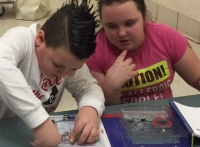
Electric Circuits KitBook
The Tennessee-made Electric Circuits KitBook is both a hands-on science kit and a corresponding textbook, all in one self-contained educational tool. With the KitBook, students can study electricity and simple circuits by testing what they learn in each lesson on an actual circuit board built into the book.
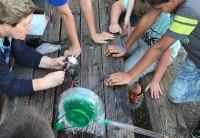
Hydropower Water Wheel
The hydropower water wheel is a micro hydro-electric generator. Students can cycle water from any kitchen faucet with the water wheel to charge cell phones or power laptops.
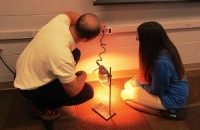
Kill-a-Watt Meters
Kill-a-Watt Meters allow students to measure plug loads, or the amount of energy used by equipment that is plugged into an outlet. Accompanying lessons provided by OEP demonstrate how to reduce plug loads in both homes and schools.
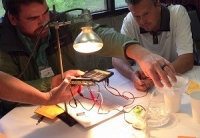
Solar Fountain
These fountains use small, solar-electric panels to power a water pump, which circulates water throughout the fountain. Its solar mount can swivel, allowing students to experiment with how solar panel orientation affects the pump’s performance.
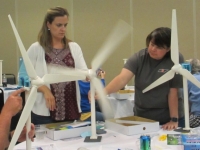
Wind Kit Basic Turbine
The Wind Kit Basic Turbine allows students to design turbine blades and test their associated power output with a multimeter (an instrument that can measure voltage, current, and resistance), LED lamps, or an ultracapacitor (energy storage device).
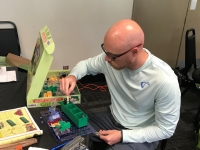
Alternative Energy Green Snap Circuit Kit
The Green Energy Kit offers projects designed to demonstrate how renewable energy is generated. Students can experiment with solar power, windmills, hydroelectric power, rechargeable batteries, and liquid batteries to experience green energy generation firsthand. The kit comes with green energy components, like a solar cell, a hand crank, a fan, a water wheel, and a liquid holder with an electrode.
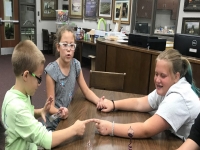
Energy Stick
Tool used in experimenting with open and closed circuits. The Energy Stick features electrodes on each end of its 7.5″ long tube. When these electrodes are touched simultaneously, long-lasting LED lights inside the tube flash and the tube makes a noise.
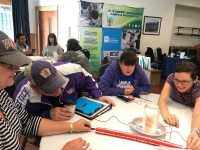
Incandescent Bulb
When you touch the free ends of the alligator clips to your “super battery,” you form a complete circuit. That means electricity flows freely through the entire apparatus that you have just built. This flow of electricity channels through the graphite-based mechanical pencil refill that is connected by alligator clips. The flowing electricity has a noticeable effect on the pencil refill, as it begins to glow and give off smoke. This happens because the electricity heats the graphite refill to an incredible temperature.
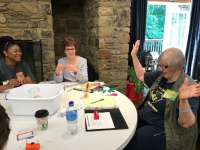
Simple Motor
Demonstrates how when electricity is passed through a wire coil you create an electromagnetic field, which pushes the coil away from the magnet When you give the coil a spin, since one side of the wire is insulated, you break the circuit briefly, so the coil continues to rotate using its momentum. When the circuit is complete again, the magnetic field once again repels the coil, so it keeps spinning. The motor can continue to spin until the battery is dead!
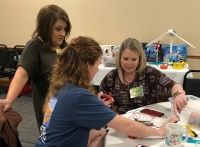
Faraday Flashlight
Demonstrates the principle that a magnet passing through a coil of wire induces a current, which in this case lights an LED. Two LED’s are used, one that lights when the magnet moves in one direction and the other lights when the magnet goes back the other way.
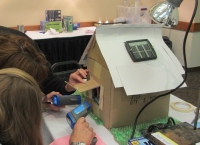
Energy House Competition
The Energy House Competition challenges participants to design and build a model house, keeping in mind efficiency, conservation, and economic return. Made from cardboard and other recycled materials designed to imitate insulation, participants must measure the efficiency of their homes as they attempt to maintain stable temperatures under a heat lamp. After, they are encouraged to rethink their houses and determine how they can improve their designs.
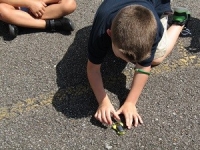
Fuel Cell Cars
These cars are powered by a miniature version of the technology used in today’s fuel cell vehicles. Featuring a small solar panel and a reversible Proton Exchange Membrane fuel cell, the cars use solar energy to power the electrolysis process, producing hydrogen. The hydrogen charges a battery, which provides power to the car’s tiny electric motor. The solar panel can also be used to power the car, by itself or in hybrid mode, with the fuel cell. Students learn about topics including energy conversion, chemical reactions, renewable energy, hybrid and electric vehicles, and more.
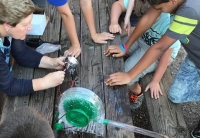
Hydropower Water Wheel
The hydropower water wheel is a micro hydro-electric generator. Students can cycle water from any kitchen faucet with the water wheel to charge cell phones or power laptops.
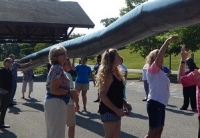
Solar Balloons
Solar balloons can be used to demonstrate buoyancy, convection, thermodynamics, and solar power. Instructors can fill the fifty-foot balloon with air and then take it out to an open space on a calm, clear, sunny day. As sunlight hits the balloon’s dark surface, the air inside the balloon heats up. Since warm air is less dense than cool air, the balloon floats higher and higher.
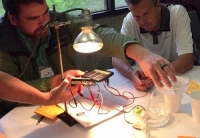
Solar Fountain
These fountains use small solar-electric panels to power a water pump, which circulates water throughout the fountain. Its solar mount can swivel, allowing students to experiment with how solar panel orientation affects the pump’s performance.
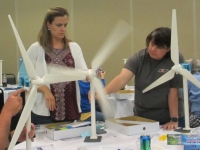
Wind Kit Basic Turbine
The Wind Kit Basic Turbine allows students to design turbine blades and test their associated power output with a multimeter (an instrument that can measure voltage, current, and resistance), LED lamps, or an ultracapacitor (energy storage device).
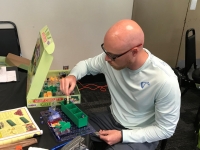
Alternative Energy Green Snap Circuit Kit
The Green Energy Kit offers projects designed to demonstrate how renewable energy is generated. You can experiment with solar power, windmills, hydroelectric power, rechargeable batteries, and liquid batteries to experience green energy generation firsthand. The kit comes with green energy components, like a solar cell, a hand crank, a fan, a water wheel, and a liquid holder with an electrode.
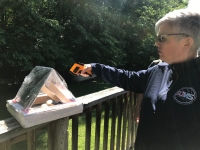
Solar Oven
Solar ovens use solar energy—light and heat emitted from the sun—to cook food. They can also be used to pasteurize water or even sterilize instruments. The simple answer is that it is designed to absorb more heat than it releases.
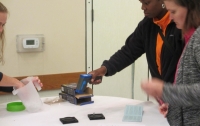
Melting Blocks
Melting blocks can be used to demonstrate thermal conductivity. Using two melting blocks made of different materials, students place an ice cube on each block at room temperature. One ice cube begins to melt and disappear after about 90 seconds. The other ice cube shows no evidence of melting whatsoever.
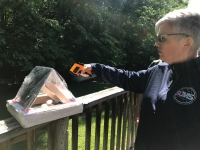
Solar Oven
Solar ovens use solar energy—light and heat emitted from the sun—to cook food. They can also be used to pasteurize water or even sterilize instruments. The simple answer is that it is designed to absorb more heat than it releases.
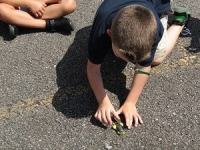
Fuel Cell Cars
These cars are powered by a miniature version of the technology used in today’s fuel cell vehicles. Featuring a small solar panel and a reversible Proton Exchange Membrane fuel cell, the cars use solar energy to power the electrolysis process, producing hydrogen. The hydrogen charges a battery, which provides power to the car’s tiny electric motor. The solar panel can also be used to power the car, by itself or in hybrid mode, with the fuel cell. Students learn about topics including energy conversion, chemical reactions, renewable energy, hybrid and electric vehicles, and more.